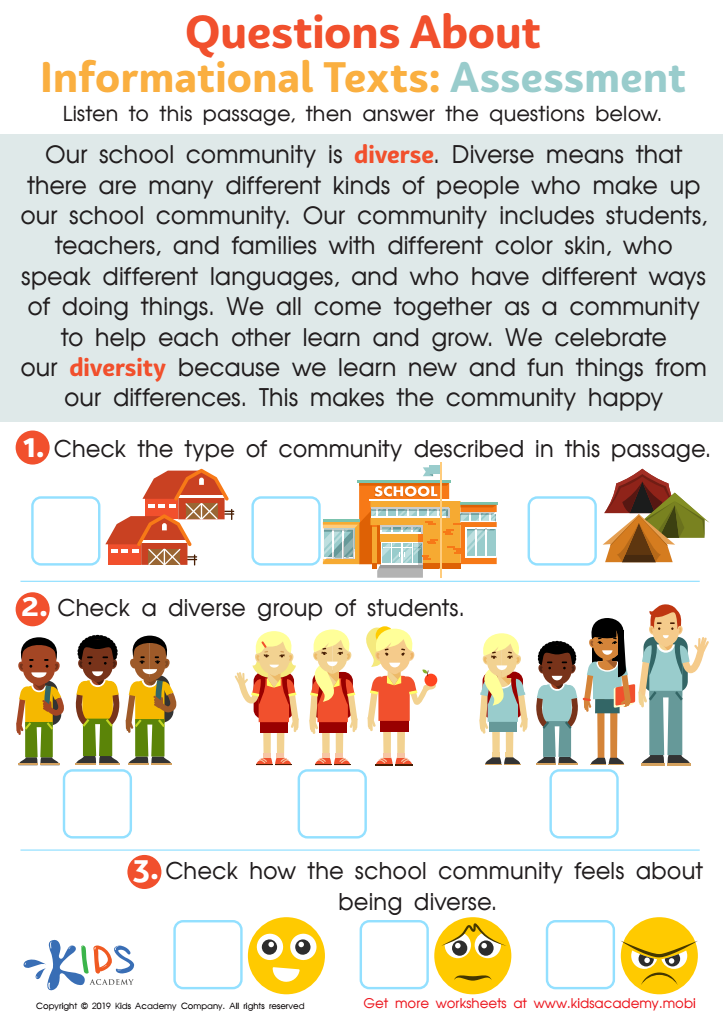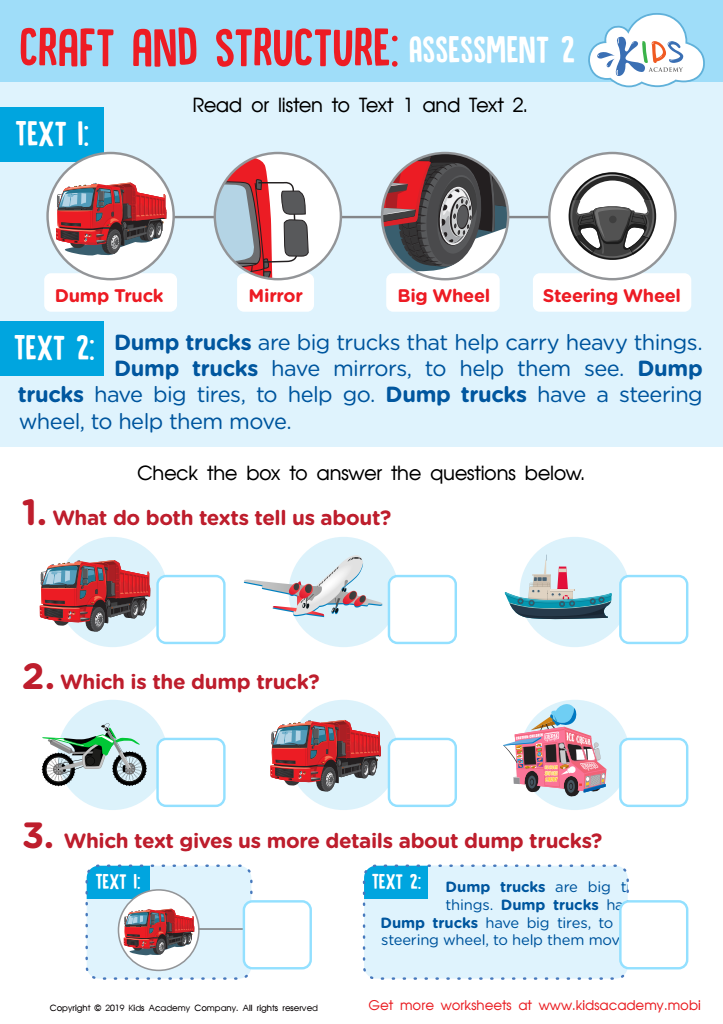Normal Reading Non-Fiction Worksheets Activities With Answers for 5-Year-Olds
2 filtered results
-
From - To


Questions About Informational Texts: Assessment 1 Worksheet


Craft and Structure: Assessment 2 Worksheet
Normal Reading Non-Fiction Worksheets Activities with Answers are a fundamental resource in the educational toolkit for several compelling reasons. These structured activities not only enhance comprehension skills but also prepare students for the vast world of factual information outside the classroom.
Firstly, engaging with Non-Fiction through these worksheets allows students to develop critical thinking skills. By answering questions related to the text, learners evaluate information, differentiate between fact and opinion, and understand cause and effect relationships. The inclusion of answers further aids in the immediate reinforcement of correct understanding and rectification of any misconceptions.
Secondly, these activities familiarize students with a variety of text structures and features found in Non-Fiction, such as indexes, glossaries, headings, and graphs. This knowledge is invaluable, as it helps students navigate through different types of informational texts efficiently, enhancing their learning and research skills.
Furthermore, Normal Reading Non-Fiction Worksheets Activities with Answers encourage a deeper engagement with the text. Students are prompted to summarize information, make inferences, and draw conclusions based on the evidence presented in the reading material. This not only improves reading comprehension but also fosters a habit of looking beyond the surface level and understanding the broader implications of the text.
Additionally, these worksheets cater to diverse learning styles through a mix of question formats—multiple choice, short answer, and essay questions. This variety ensures that all students can demonstrate their understanding in a way that suits their strengths, making learning more inclusive and accessible.
In conclusion, Normal Reading Non-Fiction Worksheets Activities with Answers are an indispensable tool in teaching and learning. They enhance critical thinking, familiarize students with non-fiction text features, engage them in deep text analysis, and cater to diverse learning preferences. By incorporating these activities into the curriculum, educators can significantly boost students' comprehension skills and prepare them for the challenges of understanding real-world texts.

 Assign to the classroom
Assign to the classroom












